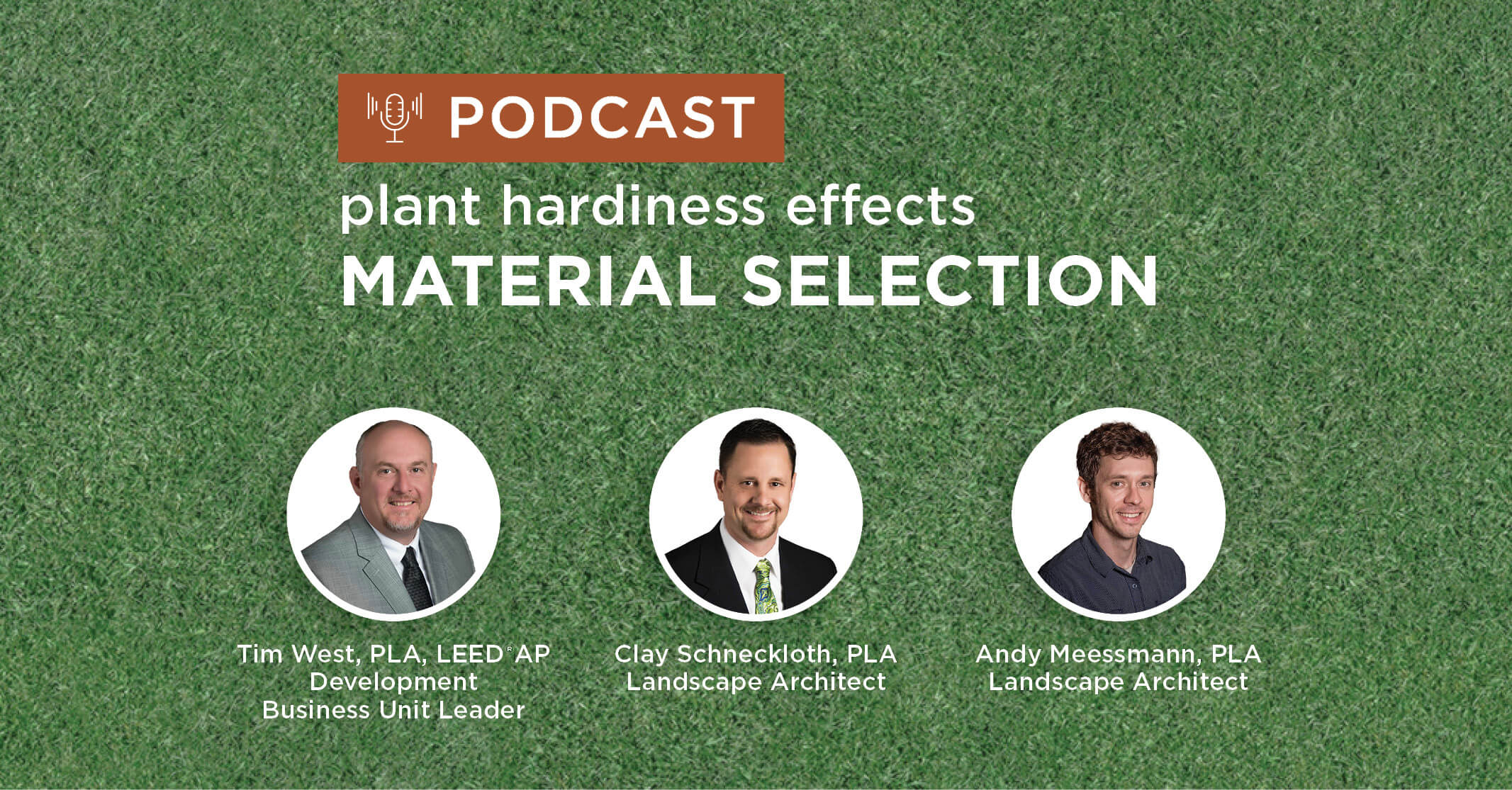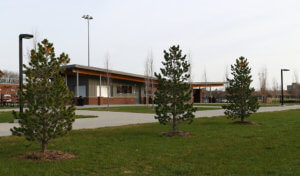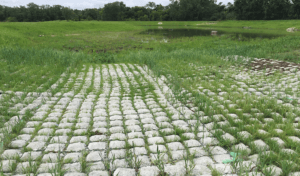Climate Change Shifts Plant Hardiness & Material Selection
While the changes may appear gradual, plant hardiness and material selection becomes a struggle when adapting to the fluctuations in temperature, water cycles, and other environmental conditions. During this second episode of a three-part series on climate change, Landscape Architects Tim West, PLA, Clay Schneckloth, PLA, and Andy Meessmann, PLA discuss shifts in plant zone hardiness and the evolving plant material landscape.
Podcast Agenda
- Evolving Plant Hardiness Zones (0:20)
- Successful Use of Seed Mixes (0:47)
- Mulching & Covering to Combat Increased Rainfall (2:54)
- Incorporating Biodiversity Throughout Designs (4:43)
- Diversity Requirements Through Municipalities (5:25)
- Preventing Disease in Trees (6:39)
- Creating Environmentally Sensitive Designs in Culturally Important Areas (7:07)
- Selecting Adaptable Plant Species (9:27)

Tim West, PLA, LEED®AP
Development Business Unit LeaderTim West, PLA, LEED®AP
Development Business Unit LeaderMaster Planning, Project Management, Athletic Design, Park Design, Public Engagement

Clay Schneckloth, PLA
Landscape ArchitectClay Schneckloth, PLA
Landscape ArchitectParks and Recreation Design, Sports Fields Design, Green Infrastructure and Native Plantings, Landscape Design

Andrew Meessmann, PLA
Landscape ArchitectAndrew Meessmann, PLA
Landscape ArchitectMaster Planning, Industrial and Commercial Site Design, Residential Development
Evolving Plant Hardiness Zones
Tim West (0:20)
We’re seeing significant effects from climate change on a number of our plant communities in the Midwest. Some of these plants that we’ve relied on year after year for spring blooms, unique forms, branching, or maybe fall color, don’t seem to be performing as well as they were, say about 15 to 20 years ago. The hardiness of some of these plants is lacking, if not much worse than they’ve been in the past.
Clay Schneckloth (0:47)
One of the items that have stood out to me over the years is the ornamental trees. They’ve always been an item that I’ve enjoyed planting, watching grow, trim, and see the different blooms and seasonal changes that we have with them. The redbuds and Japanese maples are items that I enjoy and have noticed over time that they just are struggling around here, trying to get those to thrive and work at all.
Successful Use of Seed Mixes
Andy Meessmann (1:14)
Yeah, and something that I’m seeing become more and more complex is how we use seed mixes, the proper way to install them, and how we write our specs. It’s to the advantage of the client, public or private, whoever we’re working with, to typically use more of a seed approach to some of these larger swaths of landscape that we’re working with. The science that’s gone into some of the native seed mixes has expanded over the last few years. We have to examine our seed mixes in more detail.
This is hard for a lot of people. A lot of times these seed mixes are just kind of taken for granted. What I’ve noticed is a lot of shifts from the rye annual crop. Some of those ryes taking and over more like a weed in terms of specifying tackifier, hydro mulching, hydroseeding within a native mix. It doesn’t work as well in terms of the seed taking hold. It’s more appropriate to find a good erosion mat for those native seed mixes. That’ll allow the plants to pop through that mat, as opposed to including some sort of tackifier that’s supposed to hold that seed down to the ground. These are new developments that are constantly happening.
What I found that works best for me if I’m working on a big project that includes a lot of seed areas is just to call the local nursery here and pick their brain. These guys are the experts, and we take their knowledge and form it into a design with all the other components that we’re putting onto this site. They have a desire to give you the best information, so you keep specking their product. We’re constantly learning from some of these nurseries and the best approaches to go for seeding and sighting trees.
Mulching & Covering to Combat Increased Rainfall
Tim West (2:54)
I’ve had good luck with contacting even seed companies and seed distributors. They can provide a lot of that information that you’re talking about, Andy.
Another area that I think climate change is affecting the seeding is the intensity of some of the rainfall, requiring some sort of mulching or cover over those seed areas so that they don’t wash away. There’s been a pretty bad problem with people wanting to utilize hydro-mulch with a seed slurry mixed in with it to establish that seed into the ground. It’s not getting enough soil contact and I think that’s kind of the lazy way that people utilize that technology. We’re seeing a lot of seed companies sell that as a way to eliminate erosion and get the seed down and growing all at once. But it’s really important that the seeds are drill seated in first and that the mulch is just used as the cover and not a slurry throughout it.
Another area that I wanted to talk about real quick before we left this subject was the microsighting of trees. It’s becoming really important that these trees are planted almost exactly at the design spot. You see a lot of problems with contractors, either switching trees around, or there might be a tree at that location, but they may switch it. Have you experienced a lot of trouble with that Clay?
Clay Schneckloth (4:13)
Yeah, we have. We want to give these trees the best chance that we can to survive. When we’re looking at trees and varieties to work in the specific site, there are a lot of factors that we key in. We’re working with the nurseries to understand root growth, how they’re being balled and burlapped, all the way to the contractor and how they’re installing it, and then the maintenance of this tree after it’s being installed. So there are a lot of key factors that we need to have that conversation with, starting at the very beginning.
Incorporating Biodiversity Throughout Designs
Tim West (4:43)
Yeah, definitely. I think that becomes an important element of plant design.
We hear a lot about biodiversity, and that’s easy to say but sometimes harder to do. What impacts are you guys seeing from changing plant requirements, particularly regarding biodiversity? An easy example is the Dutch elm disease (DED) effect on elm trees in the sixties through the eighties. That resulted in overplanting of ash trees and then the onset of emerald ash borer (EAB). Now we’re hearing about the Asian long-horned beetle (ALB) and its effect on maples. What type of strategies are you using for incorporating biodiversity into your plant selection?
Diversity Requirements Through Municipalities
Andy Meessmann (5:25)
One of the challenges we face in terms of diversifying our plants is when they’re installed in the construction sequence and what we’re left with. We spend a lot of time on planting lists, but sometimes we’re required to make some substitutions at the end. If it’s approaching fall and a particular species isn’t left, you always have to have a backup plan for some of those species that you might’ve called out on plans. Which makes it more challenging, coupling that with tree requirements that some jurisdictions require and making sure you’re following all their guidelines and still trying to find that street tree that needs to go in.
Clay Schneckloth (6:02)
Yeah, I’d agree with that, Andy. You need to check with those jurisdictions. Certain species that you may use, one community might not be allowed in the other or have quantity restrictions. So it’s good to follow up with them.
We also need to take into consideration, along with the diversity, we want to make sure we talk with a licensed landscape architect or certified arborist when you’re looking and selecting trees for certain locations. There’s a reason that these people have the education and experience of working with these trees. Getting some guidance from these people is a valuable resource that will help the success of your trees.
Preventing Disease in Trees
Tim West (6:39)
So if a lot of these plant ecosystems are changing and landscape materials are changing, how do you adapt those changes into your future designs to protect either traditionally environmentally sensitive areas or culturally important areas, or historically protected areas? How do you go backward in time, while using a new plant palette or material palette?
Creating Environmentally Sensitive Designs in Culturally Important Areas
Clay Schneckloth (7:07)
I want to talk a little bit about the cultural important landscapes. We’re talking mostly about plant material, but a lot of times, when we’re working with landscapes, we incorporate some limestone features, marble, or stone of other products. One of the items that has been brought to our attention that we’ve worked on in the past is protecting limestone, maybe a wall or column that’s been registered with the state historical society.
When you’re dealing with culturally important landscapes, it’s not just the plant material. It’s also the structures that are incorporated within that landscape. When you start talking about a stone material, a lot of times, there’s some buildup of algae or other products on this limestone, and we’re trying to do a restoration project on this, but we definitely want to try and protect it as much as we can. We definitely want to halt the process of deterioration and stabilize the condition of the product. Repairs on these items are basically, we’re going to consider it with minimal disturbance when we start doing restoration to these limestone features—trying to keep them culturally protected as much as we can.
There are a few different products out there that we’ve used. EaCo Chem is a chemical that has been used by many different restoration contractors. That is an eco-friendly type product that will not harm the environment but still be able to clean and protect these limestone features. We came across another product that they’ve used dry ice to help clean these features. So there are some new products out there, and there are pros and cons of each, and we can definitely walk through some of those items with you.
Tim West (8:48)
We’ve had a lot of projects that have had some sort of aspect protected through the state historical designation. You have to be really careful with modifying those.
We did some work out at Camp Dodge. We’ve done some planning down in Knoxville, where we had some historic elements and structures that really can’t be touched and they need to be restored. So the use of new materials has to be blended in carefully, but there’s always a lot of benefits from using more hardy materials or recycled materials. We’d encourage you to look for opportunities to incorporate those in your design.
Selecting Adaptable Plant Species
Andy Meessmann (9:27)
What we’re seeing is a change in the environment. I think that landscape architects have a unique perspective of living in the environments that we design. We’re constantly learning from these environments since we’re walking through them and we understand them better than most people. We really see these changes first hand when we explore urban spaces, natural settings, plant survivability, material constructability, and its longevity. I think we just continuously learn as landscape architects, and we bring this to every single project that we work on. It’s not necessarily doing the CA (construction administration) work for our projects, but we just see it unfold in the spaces that we enjoy, and we put that to practice on every project, and each project gets better because of that.


